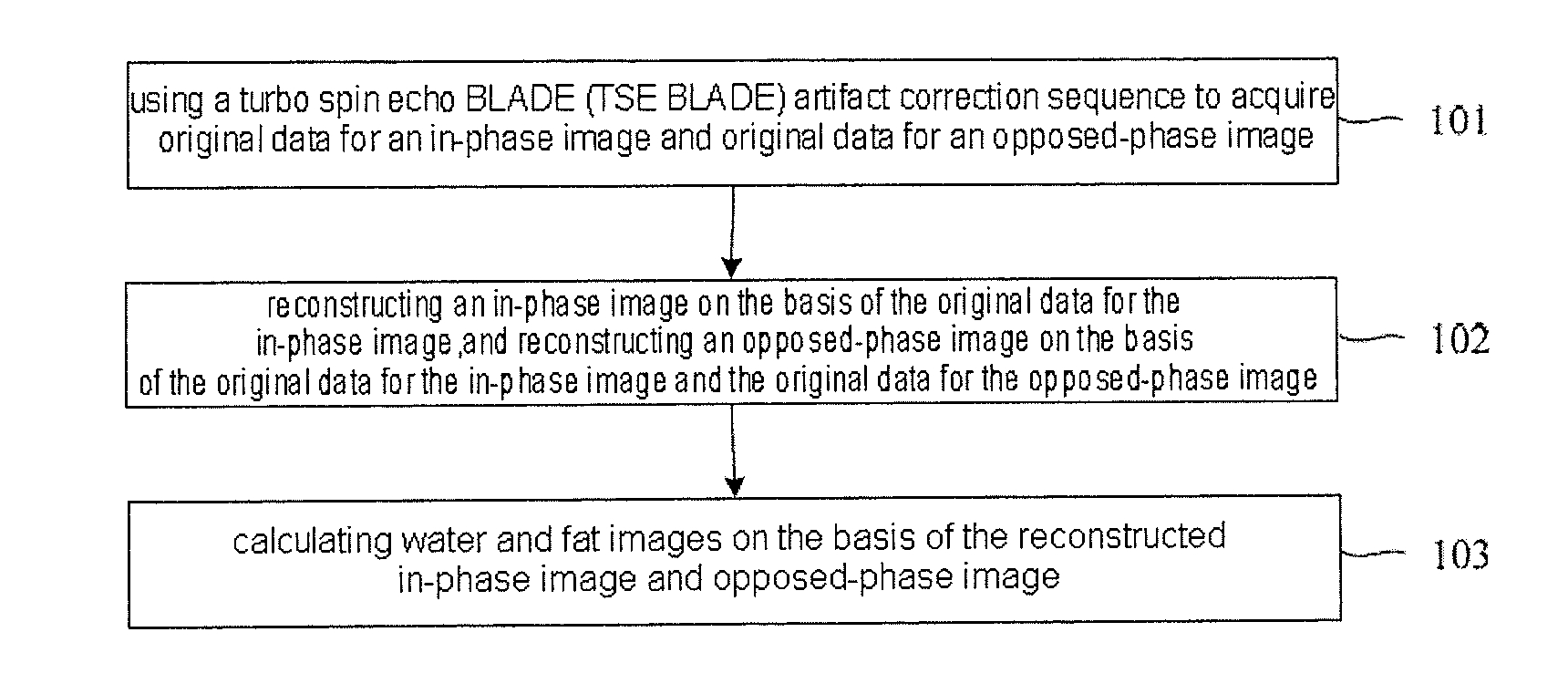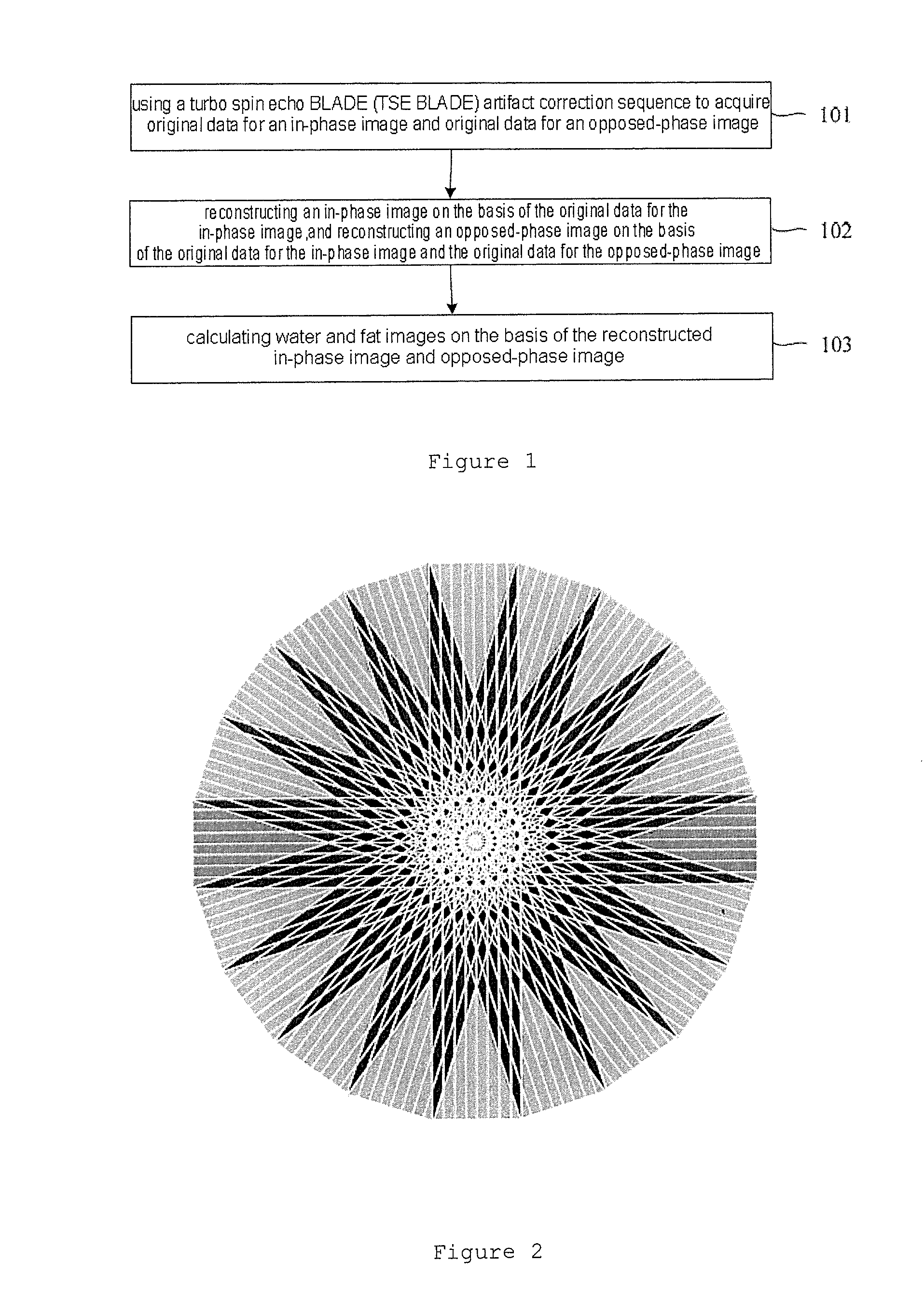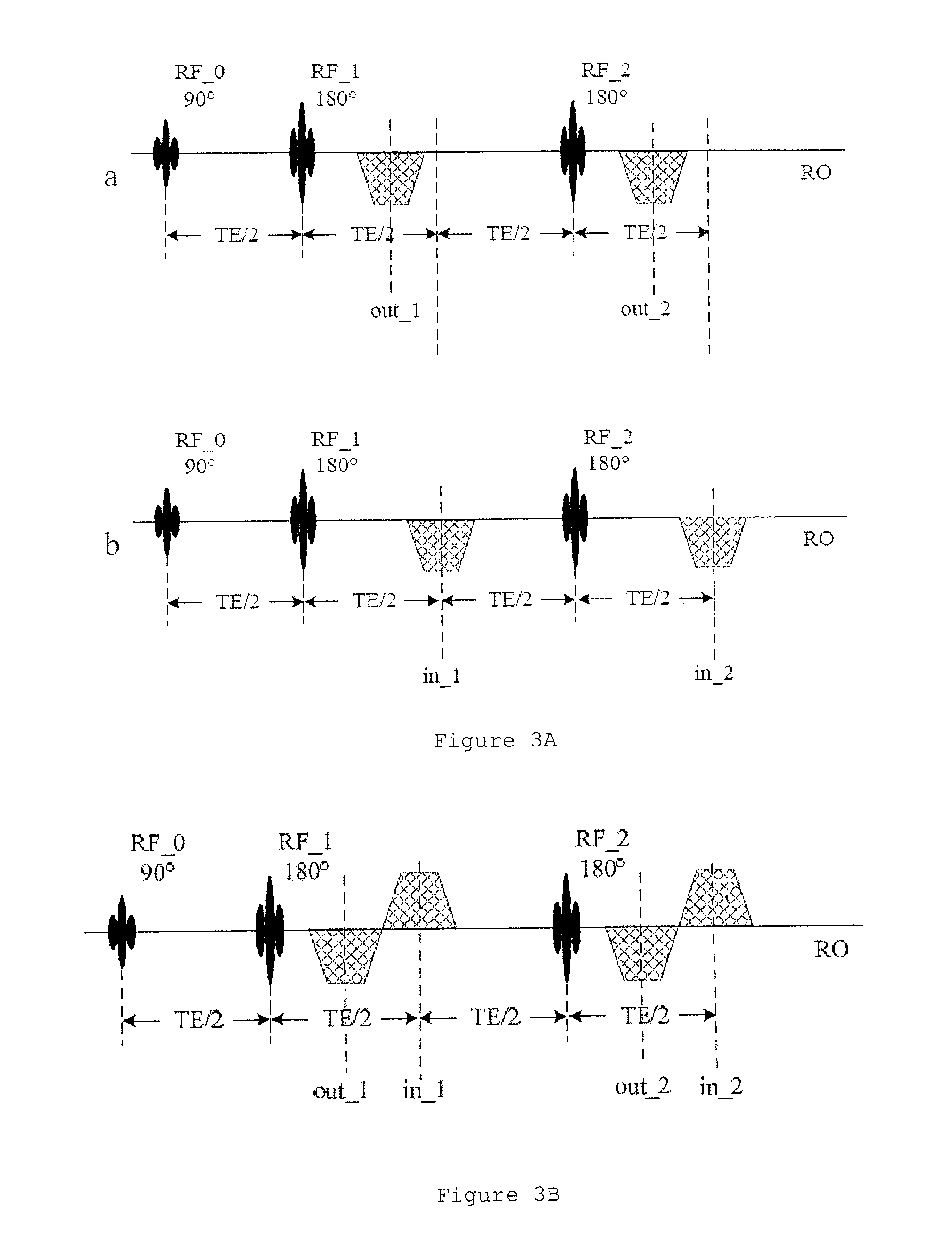Magnetic resonance imaging method and device achieving water/fat separation
a magnetic resonance imaging and water/fat separation technology, applied in the field of magnetic resonance imaging, can solve the problems of complex calculation, high cost, and high cost, and achieve the effect of improving image signal-to-noise ratio and reducing sensitivity to motion artifacts
- Summary
- Abstract
- Description
- Claims
- Application Information
AI Technical Summary
Benefits of technology
Problems solved by technology
Method used
Image
Examples
Embodiment Construction
[0021]It may be found through research that although existing Cartesian trajectory acquisition methods are simple and save time, they are very sensitive to movement, such as rigid body motion and pulsation. Radial or spiral trajectory acquisition methods, on the other hand, convert motion artifacts to fuzziness in the reconstructed image, involve complex calculation and are extremely time-consuming. Thus neither of the above two method types can eliminate rigid body motion artifacts.
[0022]In addition, existing three-point Dixon methods use phase unwrapping techniques to calculate water and fat images, and due to the intrinsic instability of phase unwrapping, the water and fat images calculated may be swapped. That is to say, when an image is theoretically believed to be a water image, the image actually calculated might be a fat image; and when an image is theoretically believed to be a fat image, the image actually calculated might be a water image. Therefore when an object to be i...
PUM
 Login to View More
Login to View More Abstract
Description
Claims
Application Information
 Login to View More
Login to View More - R&D
- Intellectual Property
- Life Sciences
- Materials
- Tech Scout
- Unparalleled Data Quality
- Higher Quality Content
- 60% Fewer Hallucinations
Browse by: Latest US Patents, China's latest patents, Technical Efficacy Thesaurus, Application Domain, Technology Topic, Popular Technical Reports.
© 2025 PatSnap. All rights reserved.Legal|Privacy policy|Modern Slavery Act Transparency Statement|Sitemap|About US| Contact US: help@patsnap.com



